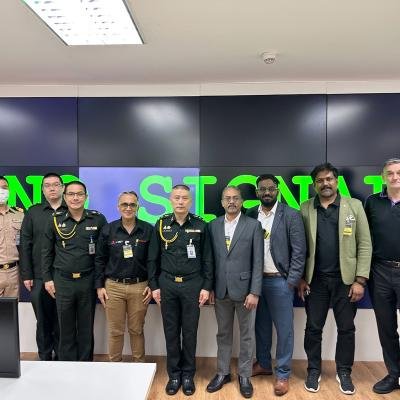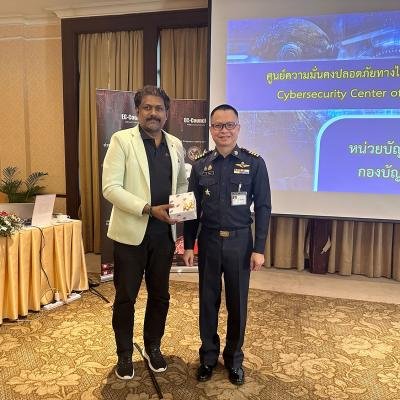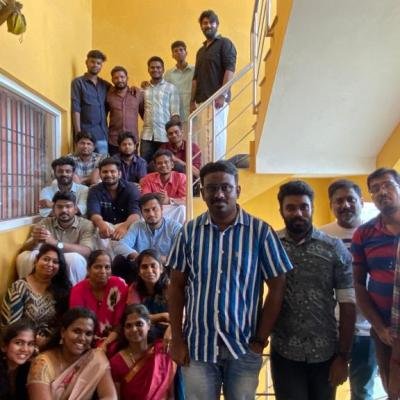The realm of cybersecurity is a relentless battleground, with adversaries constantly evolving their tactics, techniques, and procedures (TTPs). To effectively combat these threats, cybersecurity consulting organizations need a powerful tool in their arsenal. Enter the MITRE ATT&CK framework—a comprehensive and structured knowledge base that has become an indispensable resource for the industry. In this in-depth exploration, we will dissect what the MITRE ATT&CK framework is, examine its profound relevance, and elucidate how cybersecurity consulting firms employ it in their day-to-day operations.
What is the MITRE ATT&CK Framework?
Definition
The MITRE ATT&CK (Adversarial Tactics, Techniques, and Common Knowledge) framework is a sophisticated repository of knowledge designed to help cybersecurity professionals comprehend and categorize the tactics, techniques, and procedures employed by adversaries in cyberattacks. Crafted by the MITRE Corporation, a nonprofit organization operating federally funded research and development centers, this framework provides a structured and standardized way to describe, analyze, and counteract cyber threats.
The Anatomy of MITRE ATT&CK
The MITRE ATT&CK framework is meticulously organized into matrices, with each matrix representing a specific domain or platform. As of my last knowledge update in September 2021, the primary matrices include:
- Enterprise: Focusing on tactics, techniques, and procedures used in attacks against traditional enterprise networks.
- Mobile: Addressing threats targeting mobile devices and platforms.
- Cloud: Covering tactics and techniques relevant to cloud environments.
- PRE-ATT&CK: Examining adversary behavior before the actual cyberattack occurs.
Understanding the Structure
Within each matrix, a structured layout prevails, consisting of columns and rows:
- Columns: These represent tactics, which serve as the high-level objectives that attackers aim to achieve. Common tactics include initial access, execution, persistence, privilege escalation, defense evasion, credential access, discovery, lateral movement, collection, exfiltration, and impact.
- Rows: These represent techniques, which are specific methods or procedures that adversaries employ to accomplish the associated tactic. Techniques are meticulously categorized and detailed, offering a rich repository of knowledge for defenders.
Examples of MITRE ATT&CK Techniques
- Initial Access (Tactic) - Phishing (Technique): Attackers use deceptive emails to trick users into disclosing sensitive information or executing malicious code.
Example: In a recent cyberattack on a financial institution, threat actors launched a phishing campaign that imitated a trusted banking entity. Unsuspecting users received emails with links to malicious websites designed to steal their login credentials.
- Execution (Tactic) - PowerShell (Technique): Attackers use PowerShell scripts to execute malicious code on a victim's system.
Example: In a targeted attack against a healthcare provider, cybercriminals exploited a vulnerability in the organization's web application to execute PowerShell scripts on compromised servers. This allowed them to establish a foothold and escalate their privileges.
- Persistence (Tactic) - Registry Run Keys / Startup Folder (Technique): Attackers establish persistence by adding malicious entries to the Windows Registry or Startup Folder.
Example: A nation-state actor seeking long-term access to a critical infrastructure company's network employed this technique. By modifying registry keys, they ensured that their malware would automatically execute every time the system booted up, maintaining persistent access.
Using MITRE ATT&CK in Cybersecurity Consulting
Cybersecurity consulting organizations wield the MITRE ATT&CK framework as a versatile and indispensable tool in their daily endeavors. Let's explore how these firms employ this framework to bolster security measures, protect clients, and stay one step ahead of adversaries.
- Threat Intelligence and Research
Consulting organizations utilize the MITRE ATT&CK framework as a central hub for threat intelligence and research. By meticulously analyzing publicly available data, security reports, and intelligence feeds, consultants map observed attacker behaviors to MITRE ATT&CK techniques. This mapping process provides a deeper understanding of the tactics and techniques currently employed by adversaries.
Example: A consulting firm specializing in financial institutions closely monitors the MITRE ATT&CK framework for any emerging techniques related to banking Trojans. By staying vigilant and identifying novel tactics used by cybercriminals, they can proactively advise their clients on potential threats and countermeasures.
- Vulnerability Assessments
During vulnerability assessments, cybersecurity consultants simulate real-world attacks using MITRE ATT&CK techniques. This approach enables them to identify weaknesses and vulnerabilities within a client's infrastructure. By executing controlled attacks based on known adversary behaviors, consultants uncover vulnerabilities before they can be exploited maliciously.
Example: A consulting team performs a vulnerability assessment for a multinational e-commerce company. They simulate an initial access attack by attempting a phishing campaign against employees. By evaluating the organization's susceptibility to such an attack, they can recommend targeted security enhancements and employee training.
- Red Team Assessments
Red team assessments involve consultants assuming the role of adversaries, effectively emulating real cyber threats. These consultants employ MITRE ATT&CK techniques to craft and execute sophisticated attacks that mimic the tactics and techniques of actual adversaries. This process assists organizations in evaluating their detection and response capabilities.
Example: A large government agency commissions a red team assessment to assess its cybersecurity posture. The consulting team, acting as sophisticated threat actors, employs MITRE ATT&CK techniques such as lateral movement and privilege escalation to infiltrate the agency's network and gauge its defenders' response times and effectiveness.
- Incident Response and Threat Hunting
In the event of a security incident, consulting organizations turn to the MITRE ATT&CK framework to determine the scope of the attack and identify indicators of compromise (IOCs). By referencing the framework, incident response teams can swiftly identify the tactics and techniques used by adversaries, enabling a more targeted and effective response.
Example: A healthcare provider experiences a data breach. The consulting firm assisting with the incident response leverages the MITRE ATT&CK framework to analyze the attack. They discover that the attackers used PowerShell scripts (Execution) to move laterally within the network. Armed with this information, the response team can trace the attack's path, contain it, and remediate the affected systems.
Additionally, threat hunting teams within consulting organizations proactively search for signs of compromise within an organization's environment. They utilize the MITRE ATT&CK framework to identify unusual or suspicious activities that may have gone unnoticed by traditional security measures.
Example: A manufacturing company proactively engages a consulting firm to hunt for potential threats in its network. Using the MITRE ATT&CK framework, the consulting team searches for techniques such as credential access and lateral movement. They uncover a suspicious pattern of behavior that indicates an ongoing attack, allowing the organization to thwart the threat before it causes significant damage.
- Security Awareness and Training
Effective security awareness and training programs are paramount in defending against cyber threats. Cybersecurity consultants employ the MITRE ATT&CK framework as a teaching tool, using real-world examples and attack scenarios mapped to the framework to educate employees and raise awareness about potential threats. This approach empowers organizations to foster a culture of cybersecurity vigilance.
Example: A consulting organization conducts a cybersecurity training workshop for a financial institution's employees. They utilize MITRE ATT&CK to illustrate various attack techniques, providing concrete examples of phishing attempts and credential theft. Employees gain a deeper understanding of the risks they face and learn how to recognize and respond to these threats effectively.
Examples and Evidence:
- SolarWinds Attack (2020):
- Example: The SolarWinds attack, attributed to the Russian hacking group APT29 (Cozy Bear), involved compromising the software supply chain to distribute malware to thousands of organizations.
- Evidence: The MITRE ATT&CK framework was extensively referenced in analyzing this attack. Security researchers used it to map out the attacker's tactics and techniques, revealing how they moved laterally through networks and remained undetected for an extended period.
- Ransomware Attacks (Various Incidents):
- Example: Numerous ransomware attacks, such as WannaCry and NotPetya, have caused widespread disruption by encrypting victims' data and demanding ransom payments.
- Evidence: The MITRE ATT&CK framework is frequently cited in incident reports and threat analyses related to ransomware. It helps security professionals understand the techniques used by ransomware operators, such as lateral movement and data encryption.
- Emotet Malware Campaigns:
- Example: The Emotet malware, a banking Trojan turned delivery mechanism for other malware, has been a persistent threat in the cybersecurity landscape.
- Evidence: Security researchers have utilized the MITRE ATT&CK framework to dissect Emotet's tactics, from initial access through to data exfiltration. This has aided in identifying and mitigating the malware's impact.
- APT29 (Cozy Bear) in U.S. Election Interference:
- Example: The Russian state-sponsored hacking group APT29, also known as Cozy Bear, has been implicated in various cyber campaigns, including attempts to interfere with U.S. elections.
- Evidence: In investigations and reports related to these incidents, the MITRE ATT&CK framework has been used to highlight the techniques employed by APT29, providing a comprehensive view of their tactics and objectives.
- Phishing Attacks:
- Example: Phishing remains a prevalent attack vector, with attackers using deceptive emails to trick individuals into revealing sensitive information or downloading malware.
- Evidence: The MITRE ATT&CK framework includes a variety of phishing techniques, and it has been employed in incident response and threat hunting activities to understand how attackers craft convincing phishing emails and payloads.
- Cloud Security Incidents:
- Example: Cloud security breaches, such as misconfigured Amazon S3 buckets leading to data exposure, have made headlines.
- Evidence: When assessing and responding to cloud security incidents, cybersecurity professionals have utilized the MITRE ATT&CK framework to identify cloud-specific techniques that attackers use, such as exploitation of misconfigurations or privilege escalation in cloud environments.
- Red Team and Penetration Testing:
- Example: Organizations often engage red teams or penetration testing firms to assess their security posture.
- Evidence: In these engagements, the MITRE ATT&CK framework is frequently used to plan and execute simulated attacks. The resulting reports and findings provide clear evidence of how well an organization's defenses fare against known adversary tactics and techniques.
- Security Awareness Training:
- Example: Companies invest in security awareness training to educate employees about cyber threats.
- Evidence: Security awareness programs often incorporate MITRE ATT&CK-based scenarios to illustrate the tactics and techniques used by attackers. Feedback from training sessions and improvements in employee behavior serve as evidence of the framework's effectiveness in raising security awareness.
- Security Vendor Solutions:
- Example: Many cybersecurity vendors integrate MITRE ATT&CK mapping into their solutions to enhance threat detection and response capabilities.
- Evidence: The inclusion of MITRE ATT&CK references in vendor documentation, product features, and marketing materials demonstrates how the framework is being used to enhance cybersecurity products and services.
- Government and Industry Reports:
- Example: Government agencies and industry-specific organizations publish reports and guidelines that reference MITRE ATT&CK to inform best practices and incident response strategies.
- Evidence: These reports provide authoritative evidence of the framework's adoption and relevance in the broader cybersecurity landscape.
Conclusion
In the ever-evolving landscape of cybersecurity, vigilance is paramount. As we've embarked on a journey to demystify the MITRE ATT&CK framework and its pivotal role in cybersecurity consulting, it's evident that knowledge is power in the face of digital adversaries. For digiALERT, this framework is not just a resource; it's a formidable ally in the quest to safeguard our clients and their digital assets.
We, at digiALERT, understand that cybersecurity consulting isn't a static endeavor—it's a dynamic, ongoing battle. The examples and evidence we've explored underscore the practicality and relevance of MITRE ATT&CK in the trenches of this battle. From thwarting nation-state actors to educating employees about phishing risks, the framework has proven its worth time and again.
As we continue to leverage MITRE ATT&CK, we empower ourselves to navigate the complex threat landscape with precision. Our threat intelligence and research capabilities are bolstered, enabling us to stay one step ahead of adversaries. When conducting vulnerability assessments, red team assessments, and incident response, we employ the framework to deliver thorough and effective solutions.
Moreover, our dedication to raising cybersecurity awareness is exemplified in our use of MITRE ATT&CK as an educational tool. We strive not only to protect our clients but also to equip them with the knowledge and vigilance necessary to defend against cyber threats.
In closing, the MITRE ATT&CK framework is more than just a cybersecurity resource; it's a strategic advantage. As digiALERT continues its mission to safeguard the digital world, we are committed to harnessing the power of this framework to its fullest extent. Together with our clients, we forge ahead, demystifying threats, and strengthening defenses in an ever-connected and ever-vulnerable digital landscape.







